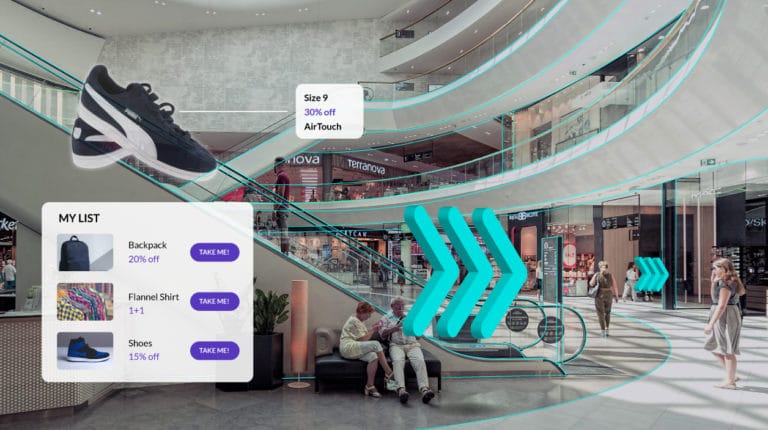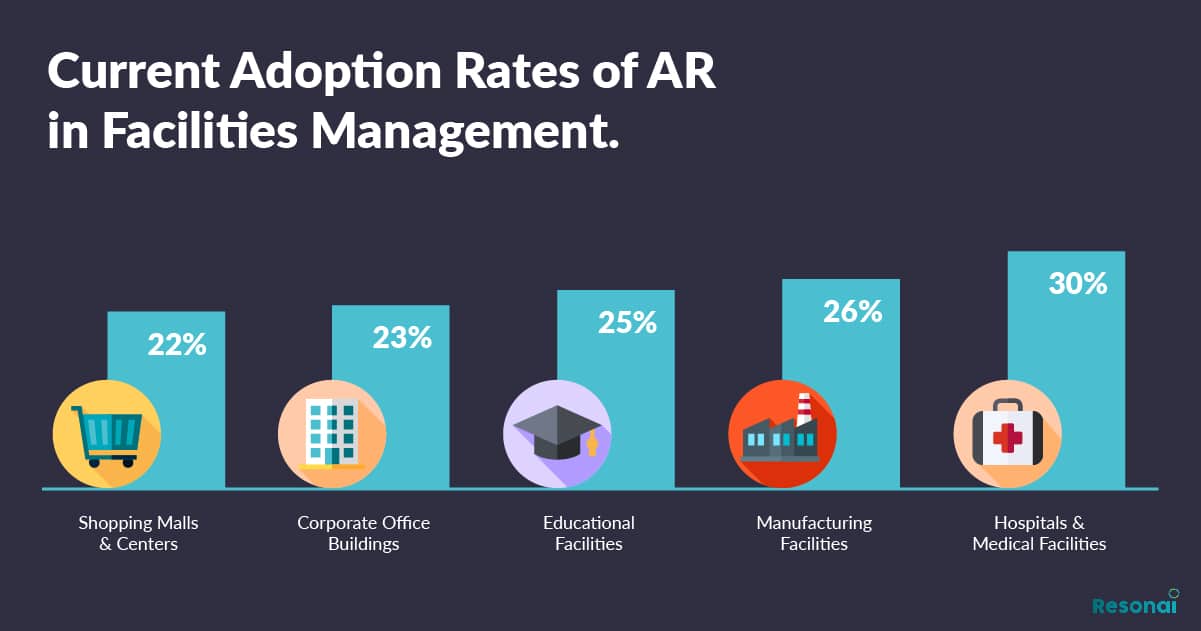
One of the attributes that defines AR’s potential is its breadth of applicability. Though use cases like product visualization and social lenses are the early leaders today, we’ll see several others develop in the coming years. That includes both consumer and enterprise applications.
Somewhere between those two endpoints is facilities management for commercial spaces. This includes everything from hospitals to shopping malls. In all cases, facilities managers can offer employees or guests more meaningful (or safe) experiences using contextual AR overlays.
For example, wayfinding can be offered with big floating arrows through AR interfaces — sort of like Google Live View but indoors. In consumer-centric spaces like shopping malls and airports, these directional overlays could have transactional endpoints….and monetization therein.
Quantifying all of the above, AR-based facilities-management player Resonai released a report that examines current adoption and projections for this spatial subsector. The project surveyed 76 U.S. and European senior facility managers from 11 vertical industries during Q4 2020.
Diving In
So what were the report’s takeaways? Below are a handful that we pulled for this week’s Data Dive. For further context, surveyed verticals include corporate, manufacturing, retail, residential, hospitals & medical, shopping centers, education, entertainment, and food & grocery.
— Hospitals and medical facilities are the biggest AR adopters at 30 percent. Other adoptive facilities include manufacturing (26 percent), education (25 percent), and corporate (23 percent).
— The top AR application among respondents is marketing (tours and demos) at 20 percent. That’s followed by manufacturing (18 percent), maintenance and repairs (12 percent) tenant and visitor services (10 percent), and training/tutorials (10 percent).
— Top value drivers include maintenance automation (49 percent), preventative maintenance (45 percent), reducing physical contact (27 percent), supporting property leasing and sales (32 percent) new revenue opportunities (27 percent), and uncovering operational insights (22 percent).
— The top sticking point that prevents AR adoption is cost (40 percent), followed by lack of specialized personnel to manage it (38 percent).
— Cost concerns can be offset to some degree by the 27 percent of AR users cited previously who specify new revenue opportunities as an adoption benefit.
— 75 percent of facilities managers already have IoT devices active, including environmental sensors (44 percent) HVAC systems (42 percent), security systems (33 percent), automated doors (25 percent), and automated lighting (25 percent).
— This primes AR adoption, given that IoT-derived data is source material for informational AR overlays.
— In terms of aspirational adoption, 73 percent of facility managers who don’t implement AR plan to do so in the next two years.


Data Layers
If any of the above sounds familiar, it’s because it’s a child of the AR cloud, a.k.a. Mirrorworld, a.k.a. Magicverse. These constructs hold that AR requires invisible data layers that are geo-anchored to physical places to effectively trigger and enable intended AR experiences.
Key questions in AR cloud circles are access and interoperability. Will there be one big AR cloud, or walled-garden fiefdoms that represent proprietary data layers (social layers, commerce layers, etc.)? A monolithic cloud diminishes value while a fragmented one is dysfunctional.
The right answer is likely somewhere between those endpoints. We often point to the web as a model: though it has various proprietary interests and walled gardens, it works because they’re interoperable to a degree, given common languages (HTML) and protocols (HTTPS).
The main point of the AR cloud tangent is that facilities management will be one of its branches. It will offer various data layers that can be tapped on-demand — whether that’s finding new shoes in a mall or the closest fire exit in a hotel. As a microcosm of AR, its use cases will be broad.






